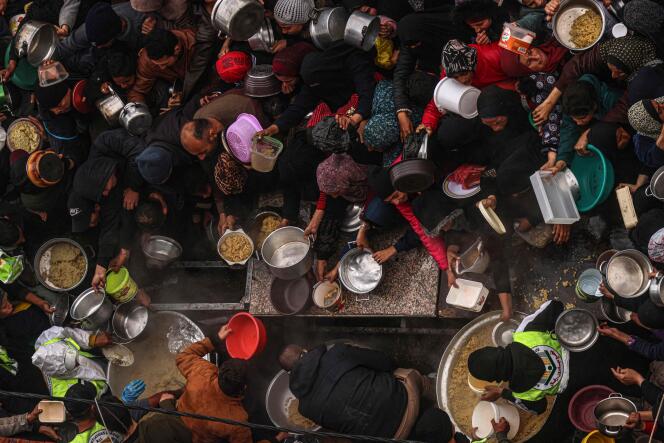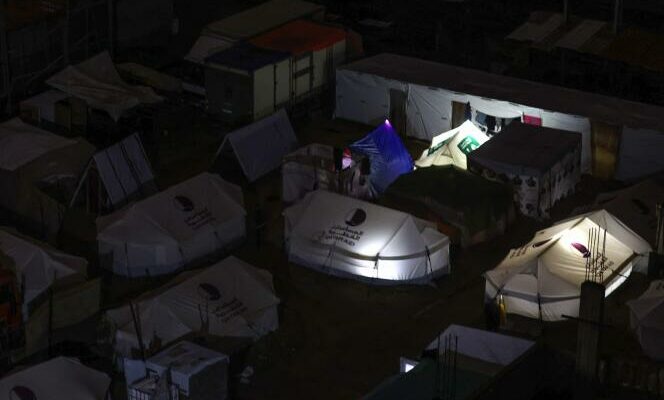Intense Israeli strikes hit the town of Rafah on Saturday February 3, at the southern tip of the Gaza Strip. According to the Hamas health ministry, at least 100 civilians were killed during the evening and night, including 14 early Saturday in strikes on two residences in the town. Now, more than 1.3 million of the approximately 2.4 million inhabitants of the microterritory are massing in Rafah, threatened in the middle of winter by famine and epidemics, according to the UN.

In recent weeks, Israeli operations have been concentrated in the neighboring town of Khan Younes, the second largest in the territory, where, according to the Israeli army, the local Hamas command is hiding.
While the war knows no respite, diplomacy is trying to negotiate a second truce, longer than that of one week which had been negotiated under the aegis of Qatar, Egypt and the United States, which had allowed at the end of November the release of around a hundred Israeli hostages in exchange for Palestinians imprisoned by Israel.
The plan for a second truce
The leader of Hamas, Ismaïl Haniyeh, based in Qatar, is still expected in Egypt to discuss a proposal drawn up during a meeting at the end of January in Paris between the head of the CIA, William Burns, and Egyptian, Israeli and Qatari officials.
According to a Hamas source, the proposal covers three phases, the first of which provides for a six-week truce. During this, Israel will have to release 200 to 300 Palestinian prisoners in exchange for 35 to 40 hostages held in Gaza, and 200 to 300 trucks of humanitarian aid will be able to enter the territory every day.
In recent days, Qatar has reported “firsts” signs in favor of the truce from Hamas, but the Palestinian Islamist movement then claimed to have not yet made a decision on this proposal, wanting a ceasefire, and not a new pause.
The proposal for a pause in the fighting was “approved by the Israeli side”, declared this week the spokesperson for Qatar’s diplomacy, Majed Al-Ansari. But Israel continues to assert that it will only definitively end its offensive in Gaza once the Islamist movement “eliminated”the hostages released, and that he will have received guarantees on the future security of his territory.
The new French foreign minister on tour in the region
The truce project must, moreover, be at the heart of a new tour of the Middle East by the American Secretary of State, Antony Blinken, starting on Sunday, which will take him to Qatar, Egypt, Israel and the West Bank. occupied and in Saudi Arabia. During the night, Mr. Blinken said he wanted to work, during this tour, “to lasting peace in the region, including lasting security for both Israelis and Palestinians”.
The new French Minister of Foreign Affairs, Stéphane Séjourné, begins his first tour in the region on Saturday, which will take him to Egypt, Jordan, Israel, the Palestinian territories and Lebanon. This tour aims to “work for a ceasefire and the release of hostages” And “convince us to reopen a political perspective” based on the two-state solution: a viable State of Palestine alongside Israel, said ministry spokesperson Christophe Lemoine.
The World Application
The Morning of the World
Every morning, find our selection of 20 articles not to be missed
Download the app
MM. Blinken and Séjourné will land in a Middle East in dire straits, due to the extension of the war in Gaza into a broader conflict between, on the one hand, Israel and its allies, and, on the other, “the axis of resistance” led by Iran and affiliated movements, such as, in addition to Palestinian Hamas, Lebanese Hezbollah, Iraqi militias and Houthi rebels in Yemen.
American strikes in Iraq
The United States, for its part, carried out strikes overnight from Friday to Saturday against elite Iranian forces and pro-Iranian groups in Iraq and Syria. This is in retaliation for an attack on Sunday in Jordan, fatal to three American soldiers, attributed by Washington to groups supported by Iran.
A total of 85 targets, on seven different sites (three in Iraq and four in Syria), were targeted, according to Washington. According to the Syrian Observatory for Human Rights (OSDH), in eastern Syria alone at least 18 pro-Iranian fighters were killed.
From Yemen, Houthi rebels have claimed responsibility for firing ballistic missiles towards southern Israel. The Israeli army, for its part, assured that it had intercepted a missile which was approaching its territory in the Red Sea.
